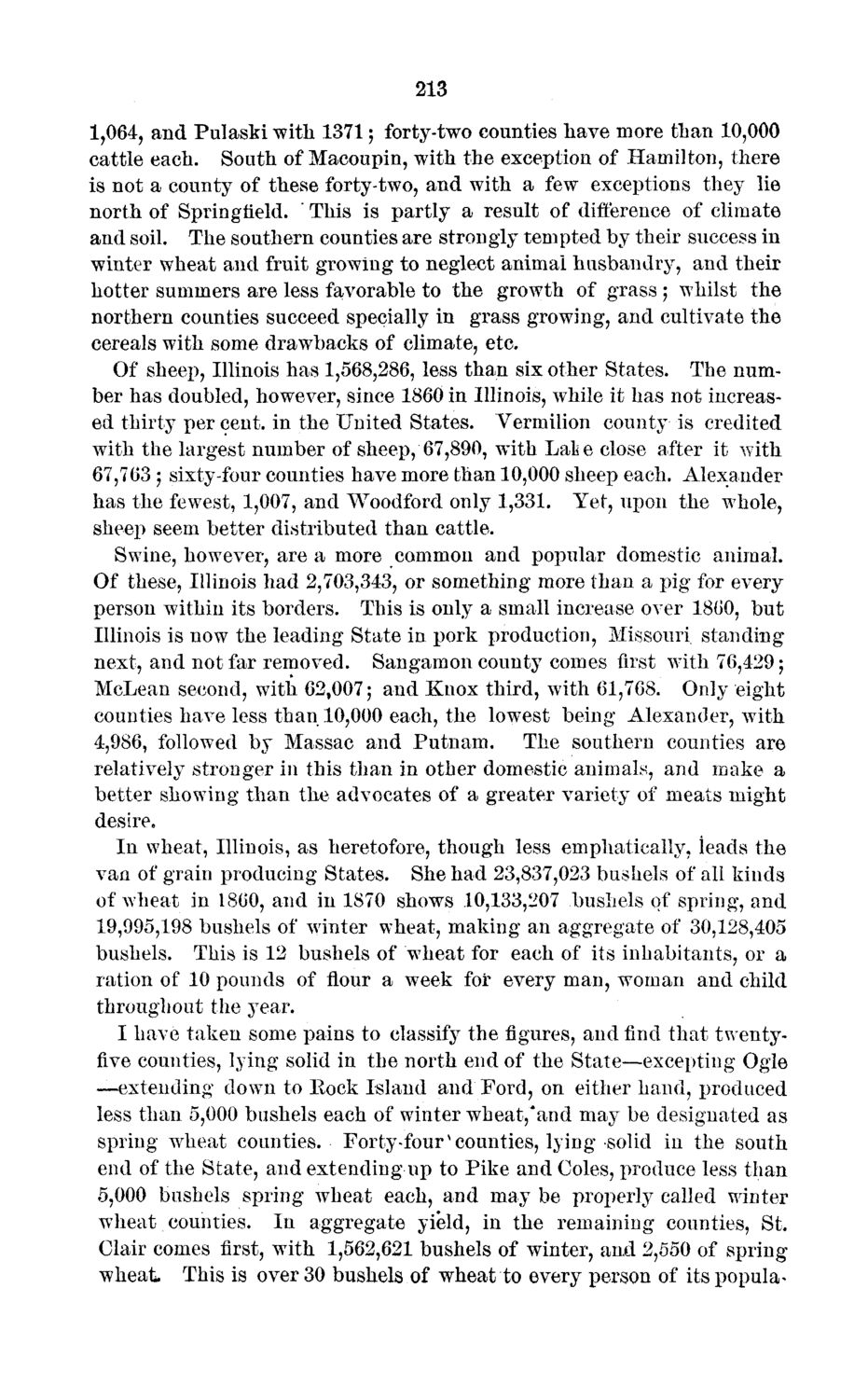| |
| |
Caption: Board of Trustees Minutes - 1873
This is a reduced-resolution page image for fast online browsing.

EXTRACTED TEXT FROM PAGE:
213 1,064, and Pulaski with 13715 forty-two counties have more than 10,000 cattle each. South of Macoupin, with the exception of Hamilton, there is not a county of these forty-two, and with a few exceptions they lie north of Springfield. ' This is partly a result of difference of climate and soil. The southern counties are strongly tempted by their success in winter wheat and fruit growing to neglect animal husbandry, and their hotter summers are less favorable to the growth of grass ; whilst the northern counties succeed specially in grass growing, and cultivate the cereals with some drawbacks of climate, etc. Of sheep, Illinois has 1,568,286, less than six other States. The number has doubled, however, since 1860 in Illinois, while it has not increased thirty per cent, in the United States. Vermilion county is credited with the largest number of sheep, 67,890, with Lake close after it with 67,763 5 sixty-four counties have more than 10,000 sheep each. Alexander has the fewest, 1,007, and Woodford only 1,331. Yet, upon the whole, sheep seem better distributed than cattle. Swine, however, are a more common and popular domestic animal. Of these, Illinois had 2,703,343, or something more than a pig for every person within its borders. This is only a small increase over 1860, but Illinois is now the leading State in pork production, Missouri standing next, and not far removed. Sangamon county comes first with 76,429; McLean second, with 62,007; and Knox third, with 61,768. Only eight counties have less than 10,000 each, the lowest being Alexander, with 4,986, followed by Massac and Putnam. The southern counties are relatively stronger in this than in other domestic animals, and make a better showing than the advocates of a greater variety of meats might desire. In wheat, Illinois, as heretofore, though less emphatically, leads the van of grain producing States. She had 23,837,023 bushels of all kinds of wheat in i860, and in 1870 shows 10,133,207 bushels of spring, and 19,995,198 bushels of winter wheat, making an aggregate of 30,128,405 bushels. This is 12 bushels of wheat for each of its inhabitants, or a ration of 10 pounds of flour a week for every man, woman and child throughout the year. I have taken some pains to classify the figures, and find that twentyfive counties, lying solid in the north end of the State—excepting Ogle —extending clown to Eock Island and Ford, on either hand, produced less than 5,000 bushels each of winter wheat,*and may be designated as spring wheat counties. Forty-fourx counties, lying solid in the south end of the State, and extending up to Pike and Coles, produce less than 5,000 bushels spring wheat each, and may be properly called winter wheat counties. In aggregate yield, in the remaining counties, St. Clair comes first, with 1,562,621 bushels of winter, and 2,550 of spring wheat. This is over 30 bushels of wheat to every person of itspopula^
| |